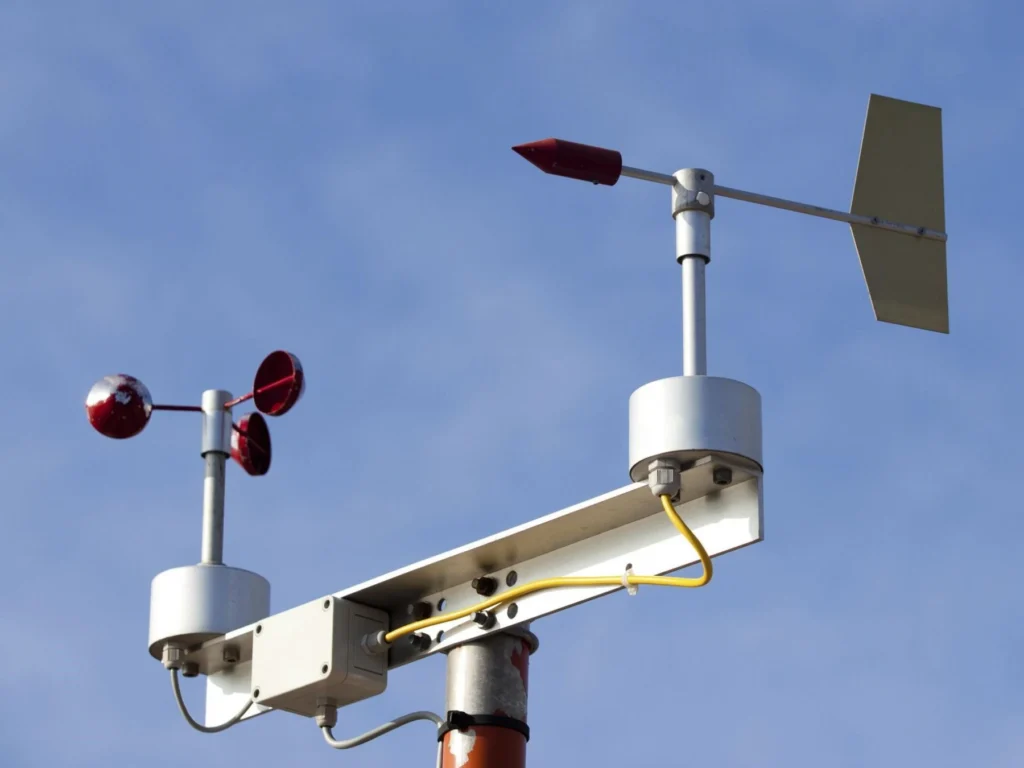
# Anemometer: The Instrument for Measuring Wind Speed
## Introduction to Anemometers
An anemometer is a device used to measure wind speed, an essential parameter in meteorology, aviation, and various environmental studies. The term “anemometer” is derived from the Greek word “anemos,” meaning wind, and “metron,” meaning measure. This instrument plays a crucial role in understanding weather patterns and ensuring safety in various industries.
## Types of Anemometers
There are several types of anemometers, each designed for specific applications and environments. The most common types include:
– Cup Anemometers: These consist of three or four cups mounted on horizontal arms, which rotate as the wind blows. The speed of rotation is proportional to the wind speed.
– Vane Anemometers: Also known as windmill anemometers, these devices have a propeller that rotates in response to wind. They are often used in handheld devices for quick measurements.
– Hot-Wire Anemometers: These use a heated wire that cools as wind passes over it. The rate of cooling is used to determine wind speed.
– Ultrasonic Anemometers: These measure wind speed by detecting the time it takes for ultrasonic pulses to travel between sensors. They are highly accurate and can measure wind direction as well.
## How Anemometers Work
The basic principle behind most anemometers is the conversion of wind energy into mechanical or electrical signals. For example, in a cup anemometer, the wind causes the cups to rotate. The rotation is then converted into an electrical signal, which is processed to determine the wind speed. Similarly, in a hot-wire anemometer, the cooling effect of the wind on the heated wire changes its electrical resistance, which is then measured to calculate wind speed.
## Applications of Anemometers
Anemometers are used in a wide range of applications, including:
– Weather Forecasting: Accurate wind speed measurements are crucial for predicting weather patterns and issuing warnings for severe weather conditions.
– Aviation: Pilots rely on anemometers to assess wind conditions for safe takeoffs and landings.
– Environmental Monitoring: Anemometers help in studying wind patterns and their impact on ecosystems, air quality, and climate change.
– Industrial Applications: In industries such as wind energy, anemometers are used to assess the potential of wind farms and optimize turbine performance.
## Choosing the Right Anemometer
When selecting an anemometer, consider factors such as the intended application, required accuracy, and environmental conditions. For instance, ultrasonic anemometers are ideal for high-precision measurements in research, while cup anemometers are suitable for general-purpose use in weather stations.
## Conclusion
Anemometers are indispensable tools for measuring wind speed, providing critical data for various scientific and industrial applications. Understanding the different types and their working principles can help in selecting the right instrument for specific needs. Whether for weather forecasting, aviation, or environmental studies, anemometers continue to play a vital role in our understanding and interaction with the natural world.
Keyword: instrument to measure wind speed